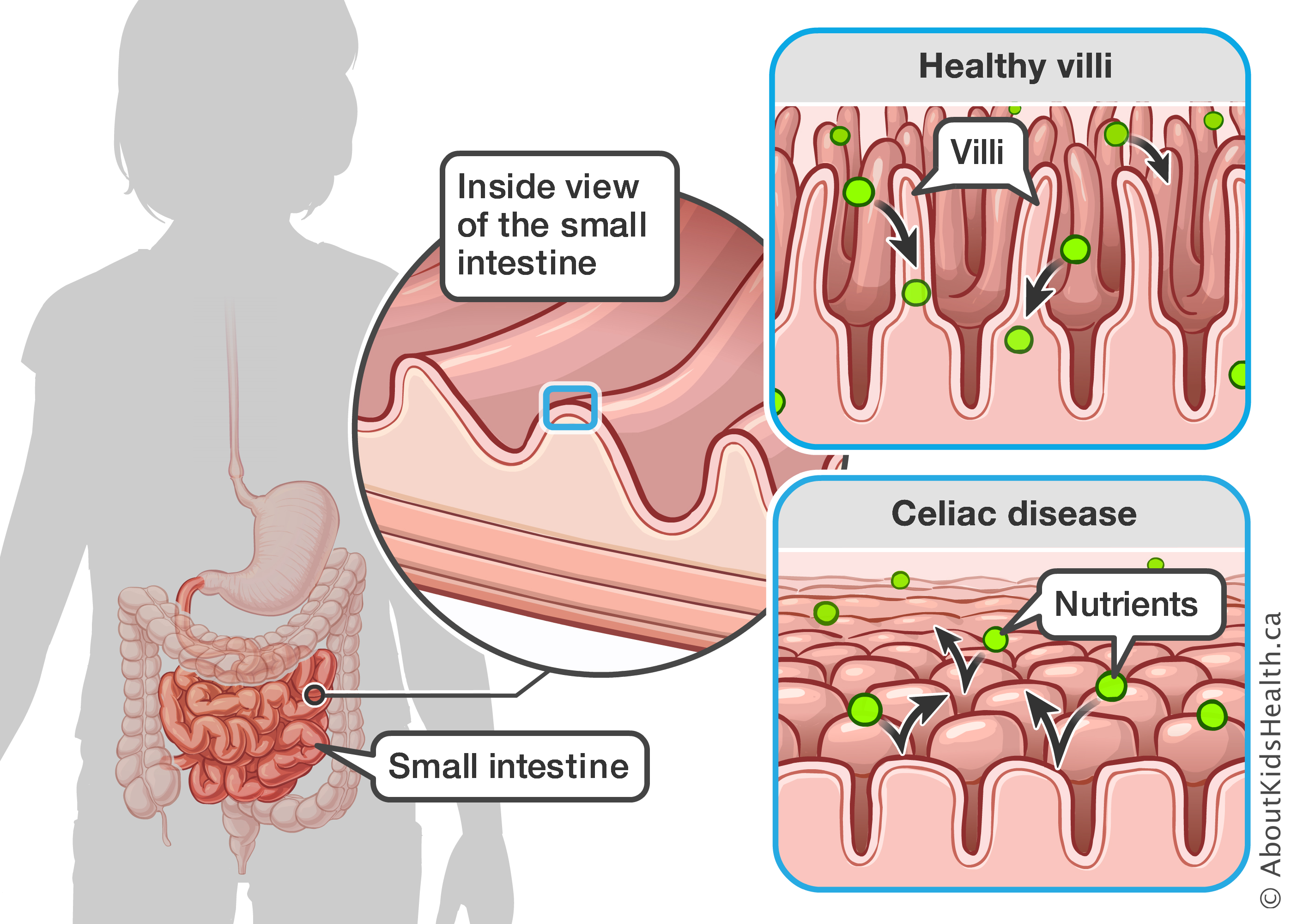As a grandparent, you may have experienced the joy of looking after your grandchildren and building a special bond. However, if your grandchild has been diagnosed with a chronic condition such as celiac disease, you may feel many emotions, such as worry and confusion, about having to learn about a new condition and how to best support your grandchild.
The gluten-free diet may seem strict, but making a few small changes in your home and being very careful about gluten cross-contact can make a big difference in your grandchild’s health.
How to prepare for your grandchild's visit
Learn about celiac disease and the gluten-free diet
Celiac disease
Celiac disease is a lifelong condition that requires strict adherence to a gluten-free diet. In people with celiac disease, any contact with gluten triggers a reaction from the body’s immune system. When a child with celiac disease eats gluten, it causes damage to the lining of the small intestine, which makes it harder for their body to absorb nutrients such as vitamins and minerals.
Some children with celiac disease may experience digestive symptoms, such as stomach aches, vomiting, and diarrhea, or symptoms such as skin rashes when they eat gluten. Other children may experience no symptoms at all. Although a child may not experience any symptoms, gluten is still toxic to them and can cause damage to their body.
Even a little bit of gluten can do a lot of harm. This is why it is important that your grandchild follows a strict gluten-free diet.
The gluten-free diet
A strict gluten-free diet, with no trace amounts of gluten, is the only treatment for celiac disease. Gluten is naturally found in all forms of wheat, rye, barley and hybrids such as triticale (wheat and rye). While some sources of gluten are obvious, such as wheat-based breads, pastas and baked goods, others can be hidden in things like soups, salad dressings and ice creams. For this reason, it is important to carefully read labels.
For more information about celiac disease and the gluten-free diet, it is recommended that you watch the Celiac disease and Gluten-free diet modules from AboutKidsHealth's Celiac disease learning hub.
Talk to your grandchild's parents or caregivers
Your grandchild’s parents/caregivers are the best resources when it comes to celiac disease and how to follow the gluten-free diet. They can support you by providing a list of safe foods and brands of gluten-free foods that your grandchild enjoys. They may also send you snacks, gluten-free breads and cereals or gluten-free meals for your grandchild to help ease your way into learning more about the strict gluten-free diet.
It is important to talk openly and often with your grandchild’s parents or caregivers about your grandchild’s celiac disease and the gluten-free diet. As your grandchild grows, their needs and food preferences may change. For your grandchild’s health and safety, it is important to learn about their needs and how to create a safe and inviting environment.
When your grandchild comes to visit
Have gluten-free options available
Fresh fruits and vegetables, plain poultry and meats, plain nuts and seeds, as well as legumes such as beans and lentils are all naturally gluten-free foods and can be safely served as a snack or meal.
Get into the habit of reading labels on packaged foods every time you plan to give your grandchild food. Read labels for obvious gluten-containing ingredients such as wheat, barley or rye in the ingredients list. It is also important to check for hidden sources of gluten, such as malt, starch or some yeasts, which can be made from barley or contain wheat. These foods are not safe for children with celiac disease.
At the start, it may be easier to buy packaged foods that have a certified gluten-free symbol or claim, which guarantees that the product is safe for your grandchild. Keep your grandchild’s favourite gluten-free packaged foods on hand, such as gluten-free frozen pizza, mac and cheese or treats like cookies, and store them in a special cupboard away from gluten-containing foods, such as wheat flour.
If you enjoy baking and cooking, there are plenty of child-friendly gluten-free recipes and cookbooks available. A great place to start is the Celiac Canada website.
Prevent gluten cross-contact
Cross-contact occurs when gluten is transferred from one food or object to another food or object, making it unsafe for people with celiac disease. At home, gluten cross-contact can happen through shared surfaces and objects, such as tables and kitchen equipment, or personal care products, such as hand creams and lip balms. You can prevent gluten cross-contact in your home with regular hand washing and by cleaning surfaces and objects with soap and water.
To learn more about how to prevent gluten cross-contact in your home, see Celiac disease: Tips to maintain the gluten-free diet.
Taking the time to learn about celiac disease and the gluten-free diet is the best way to support your grandchild with celiac disease and have a safe visit.

